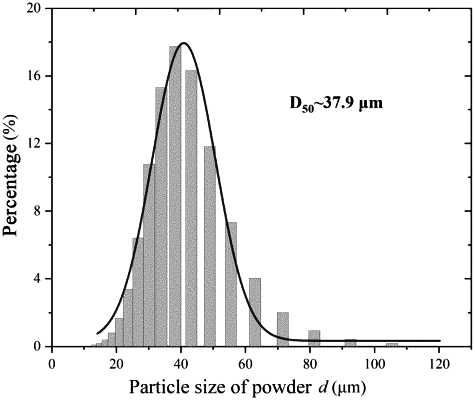| CPC B22F 1/09 (2022.01) [B22F 1/14 (2022.01); B22F 1/17 (2022.01); B22F 9/082 (2013.01); B22F 10/34 (2021.01); B23K 26/342 (2015.10); B33Y 10/00 (2014.12); B33Y 40/10 (2020.01); B33Y 70/00 (2014.12); C22C 1/0433 (2013.01); C22C 1/0458 (2013.01); C22C 14/00 (2013.01); C22C 19/007 (2013.01); C22C 19/03 (2013.01); B22F 1/05 (2022.01); B22F 2009/0836 (2013.01); B22F 10/28 (2021.01); B22F 10/36 (2021.01); B22F 10/366 (2021.01); B22F 2301/15 (2013.01); B22F 2301/205 (2013.01); B22F 2304/10 (2013.01); B23K 2103/14 (2018.08)] | 7 Claims |

|
1. A 4D printing method capable of in-situ regulating functional properties of nickel-titanium (NiTi) alloys, characterized in that this method comprises the following steps:
(1) milling: mixing a certain amount of pure Ti and pure Ni, and smelting them to obtain NiTi alloy bars; then preparing alloy powder by a rotating electrode atomization method, and sieving the powder to obtain the NiTi alloy powder with a particle size of 15-53 μm;
(2) powder modification: placing the NiTi alloy powder obtained in step (1) in a discharge plasma assisted ball mill for discharge treatment to promote activation of powder activity, then adding nano-sized Ni powder with a particle size of 100-800 nm to obtain mixed powder, and continuing the discharge treatment to realize metallurgical bonding between the NiTi alloy powder and the nano-sized Ni powder to obtain the modified powder; and
(3) 4D-printing forming: using an additive manufacturing technology to prepare and form the modified powder treated in step (2) into a functionalized NiTi alloy.
|